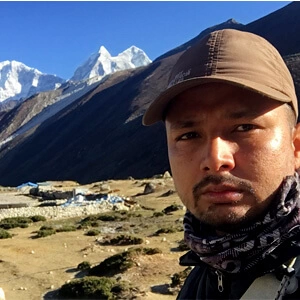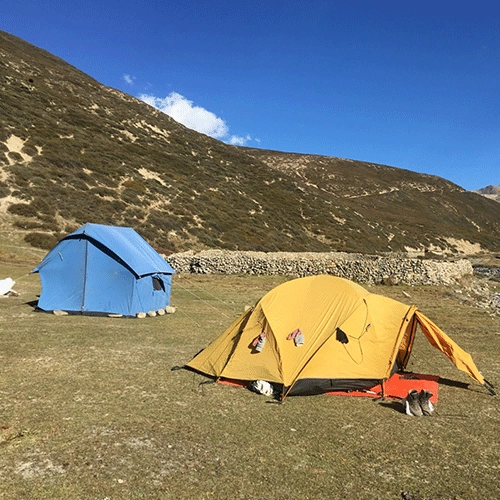In the presence of Nepal's heavenly beauty, one cannot refuse the allure of capturing its phenomena through the lens. Renowned worldwide for its majestic mountains and breathtaking landscapes, Nepal's jewels beckon photographers. Yet, diving further into its lush forest unveils a realm of exotic wildlife. This undiscovered facet establishes that wildlife photography in Nepal is a definite paradise.
Nepal's Wild Wonders: Exploring Exotic Wildlife Through The Lens
Table of Contents
Wildlife Photography in Nepal
Nepal's forests hold some of the planet's rarest creatures. Flourishing within the protective embrace of well-preserved nature reserves, these unique species have thrived undisturbed in their natural domains. During the tour in Nepal for wildlife photography, you'll encounter a tapestry of wildlife, including the iconic Royal Bengal Tiger, the solitary One-horned Rhinoceros, the elusive Red Pandas, the stealthy Clouded Leopards, the sturdy Blue Sheep, and the regal Himalayan Tahr, among an array of other captivating species.
Adding to the enchantment, Nepal's skies are painted with the hues of remarkable avian life. From the resplendent Himalayan Monal and the melodious Golden Bush Robin to the dazzling Peacock, these feathered wonders grace the landscape. The profound joy of capturing these untamed beings within a single frame is a privilege any camera enthusiast relishes.
Wildlife Photography Spots in Nepal
Nepal has made significant progress in protecting its enchanting biodiversity, resulting in remarkable growth. The country features an impressive array of conservation efforts, including nine national parks, three wildlife reserves, one hunting reserve, three conservation areas, and eleven buffer zones. Within these sanctuaries, dense jungles and pristine habitats provide haven and watchful protection to the precious wildlife that calls Nepal home.
The crown jewels of wildlife photography await at Chitwan National Park, Bardia National Park, and Koshi Tappu Wildlife Reserve. Nestled in the lush southern plains, these sanctuaries are veritable treasure troves of biodiversity, with sprawling forests enveloping vast expanses of land.
Embarking on a jungle safari tour in Chitwan National Park, you'll encounter the regal spectacle of elephants, the solitary presence of one-horned rhinos, and the ancient mystique of crocodiles – all ideal subjects for your lens. In the heart of Bardia National Park, the elusive Bengal tigers reign supreme. While these magnificent creatures inhabit various corners of Nepal, Bardia offers unparalleled opportunities to capture them in their natural splendor.
For the avid avian enthusiast, Koshi Tappu Wildlife Reserve is a paradise with over 400 bird species taking to the skies. Here, the symphony of birdlife unfolds against the backdrop of serene wetlands.
Beyond the plains, Nepal's Himalayan region holds a different allure. The trek to Langtang National Park, Shey Phoksundo National Park, and Sagarmatha National Park provides you with the realm of the mighty mountains. During these heights, you'll encounter the elusive Snow Leopards, the steadfast Himalayan Thar, the captivating Red Pandas, and the resilient Blue Sheep. Each frame captured here resonates with the untamed spirit of the Himalayas, a testament to Nepal's dedication to preserving its wild wonders.
Key Features of Photography in Nepal
A remarkable specimen of incredible bio-diversity, Nepal boasts some of the rarest wildlife species on the entire planet. Endangered and rare species like the Royal Bengal Tiger, one-horned Rhinoceros, Gharial, Himalayan Tahr, Red Panda, Great Hornbill, Impeyan Pheasant, etc. roam the forests of Nepal. Similarly, one other thing, photographers can find serene environs to frame the wildlife. The abundance of protected areas will allow you to take your photographs while enjoying the scenic delights as well. However, you should always keep certain things in mind for the good of yourself and your surroundings. It is highly recommended that you go fully prepared with all the required equipment and an experienced guide.
Nepal emerges as a supreme treasure trove of biodiversity, harboring some of the world's rarest and most remarkable wildlife species. Within its borders, endangered and elusive creatures like the iconic Royal Bengal Tiger, the solitary one-horned Rhinoceros, the enigmatic Gharial, the majestic Himalayan Tahr, the captivating Red Panda, the resplendent Great Hornbill, and the regal Impeyan Pheasant roam the forests of Nepal.
Yet, it's not just the subjects that make Nepal a photography haven. Among its wild landscapes, photographers discover tranquil backdrops to frame their subjects. The multitude of protected areas graciously offers both thriving wildlife and breathtaking scenery, allowing for a seamless integration of nature's beauty into every frame.
As you embark on your wildlife photographic journey in Nepal, it's crucial to be mindful of your surroundings and your impact. To fully incorporate this experience, careful preparation is key. Equipping yourself with all the necessary gear and enlisting the expertise of an experienced guide is highly recommended. This ensures not only your safety but also the preservation of the delicate ecosystems you're capturing through your lens.
Tips for Wildlife Photography in Nepal
Here are some tips to make your wildlife photography tour in Nepal an exceptionally rewarding experience.
- Knowing wildlife habits, behaviors, and habitats will help you predict their movements and get better shots.
- Find the best seasons for wildlife sightings in Nepal. Different species may be more active during certain times of the year.
- Bring a good quality DSLR or mirrorless camera with a telephoto lens. A lens with a long focal length (300mm or more) will allow you to capture distant wildlife without disturbing them.
- Tripods or monopods can be essential for stability, especially when using long lenses.
- Consider carrying a wide-angle lens for landscape shots and a macro lens for close-up details.
- Understand Lighting, and the golden hours (early morning and late afternoon).
- Avoid shooting in harsh midday sunlight, as it can create harsh shadows and washed-out colors.
- Be Patient and prepared to spend time in the field, waiting for the perfect shot.
- Avoid sudden movements and loud noises that might startle or disturb the animals.
- Camouflage clothing and gear can help you blend into the environment and get closer to the wildlife without alarming them.
- Use natural hides or local foliage to conceal yourself while waiting for the perfect shot.
- Always prioritize the well-being of the animals and their habitats. Do not disturb, provoke, or stress them for the sake of a photo.
- Keep a safe distance from the animals, using long lenses to capture close-ups.
- Respect Local Regulations and get required permits for wildlife photography in certain areas or national parks. Follow these rules to ensure the safety of both the wildlife and you.
Conclusion
Traveling in Nepal and spending time with nature is indeed a joyful and blissful experience. With glorious variation in wildlife, you will find more than enough opportunities to indulge in taking the photographs that you desire. A wildlife photography tour in Nepal lets you capture the prosperity of Nepal in terms of wildlife and relish it for the entirety of your life. If you are planning to travel to Nepal for wildlife photography, do not hesitate to Contact Us, We are always ready to help to organize the trip to suit your interest.





